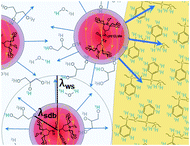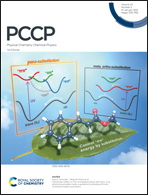Scaling analyses for hyperpolarization transfer across a spin-diffusion barrier and into bulk solid media†
Abstract
By analogy to heat and mass transfer film theory, a general approach is introduced for determining hyperpolarization transfer rates between dilute electron spins and a surrounding nuclear ensemble. These analyses provide new quantitative relationships for understanding, predicting, and optimizing the effectiveness of hyperpolarization protocols, such as Dynamic Nuclear Polarization (DNP) under magic-angle spinning conditions. An empirical DNP polarization-transfer coefficient is measured as a function of the bulk matrix 1H spin density and indicates the presence of two distinct kinetic regimes associated with different rate-limiting polarization transfer phenomena. Dimensional property relationships are derived and used to evaluate the competitive rates of spin polarization generation, propagation, and dissipation that govern hyperpolarization transfer between large coupled spin ensembles. The quantitative analyses agree closely with experimental measurements for the accumulation, propagation, and dissipation of hyperpolarization in solids and provide evidence for kinetically-limited transfer associated with a spin-diffusion barrier. The results and classical approach yield general design criteria for analyzing and optimizing polarization transfer processes involving complex interfaces and composite media for applications in materials science, physical chemistry and nuclear spintronics.

- This article is part of the themed collection: 2021 PCCP HOT Articles


 Please wait while we load your content...
Please wait while we load your content...